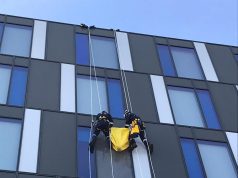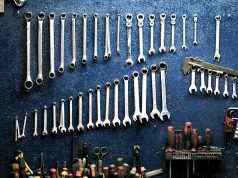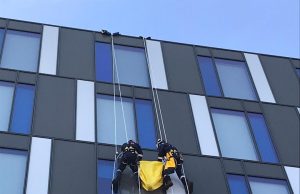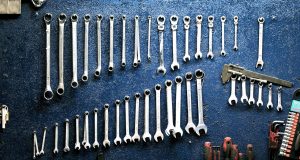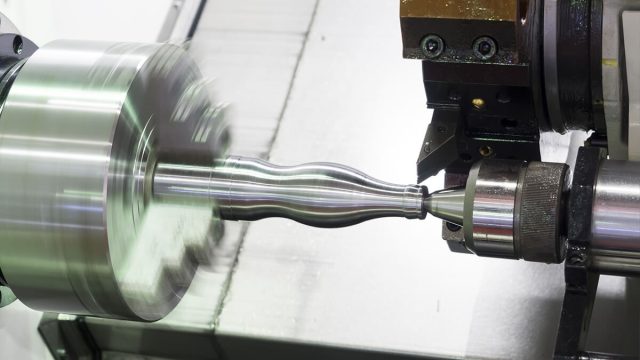
Manufacturing processes follow a variety of steps in the machine shop. And every individual process plays a role in realizing the aims of the finished products. When it comes to the different machining operations that occur in the machine shop, one thing is of utmost importance and that is applying the basics of material science to achieve the perfect finished products.
Without machine operations, it will be impossible to complete the manufacturing process. And irrespective of the materials being worked on, the engineer is responsible for deciding the ideal technique to be used in manufacturing. Experts in the business such as the UHI Group – Manufacturing Machine Shop make use of a variety of processes to achieve the perfect material design. And you will find some of the common techniques used in manufacturing today in the sections below.
The Different Machining Operations used in Manufacturing
Two main techniques are applied in materials manufacturing and they are milling and turning processes. Different equipment is used to achieve the desired output either as a standalone operation or in a combination of other techniques and equipment. Without proper investigation and design, it will be impossible to determine the ideal method to use. While some category of engineering design makes use of specialized tools, others may require the engineer to create a custom process to bring about the desired process. Still, traditional and modern methods make use of the operations listed below.
Drilling
This is something referred to as boring or reaming and is applicable when there is a need to create cylindrical holes in a material. The key tool used here is the drill bit which offers a tensile strength and can bore holes in a material with uniform finishing. The hole is drilled first to make room for other components required in the assembly process. Once the drilling is completed and the holed has been created, it is followed by the process of tapping, boring, or reaming which prepares the material to move on to the next phase of the engineering process.
While drilling and boring are often used interchangeably, the processes differ. Drilling is done to create a hole in the material which is followed by boring to offer proper accuracy and dimension to the drilled hole. Hand reamers and other special machines are used to provide a surface roughness to the drilled hole. You can find more here theengineerspost.com on drilling operations and tools used in engineering.
Turning
Another common manufacturing process that takes place in the machine shop is turning which is done using a lathe. The lathe is used for spinning the material along with the cutting tool. Just as the name implies, this involves turning the material across two motion axes which creates a uniform cut. This method is applied when there is a need to achieve a precise depth and width on the workpiece.
Turning is done on either the interior or exterior of the material. When it is done internally, it is referred to as boring. Facing is used to refer to the process where the end of the material is where the cutting takes place. Facing is done at the start and end of the cutting process. This is done when there is a fitted cross-slide on the lathe.
Milling
Milling is done to remove material from a workpiece. This is done with the help of rotating cutters and is different from turning in that the workpiece doesn’t spin. Traditional milling procedures make use of moveable tables which makes it easy to mount the workpiece to be worked on. The modern types of milling machines usually feature a combination of table and cutting equipment on a moveable plane.
Slab and face milling are the common milling operations employed in the machine shop. Milling machines can perform operations such as rabbeting, cutting, planning, die-sinking, routing, and many more. This makes the milling machine one of the machines suitable for flexible engineering manufacturing processes.
Grinding
When you need to remove small materials from cylindrical and flat surfaces. Surfaces grinders are mounted on a table which makes it easy to feed the workpiece into the grinding wheel. The wheel cuts at a depth that ranges from 0.00025 and 0.001 inches. With cylindrical grinders, the workpiece is mounted in the middle of the device and then rotated simultaneously along with a spinning abrasive wheel.
Centerless grinding is employed in the production of small parts where there is no relation to the ground surface rather as a whole. This is usually employed in the production of small parts materials in high volumes. Another double-disc grinding makes it easy to pass material parts once or countless times between two grinding wheels rotating counter-clockwise. This page has more on grinding operations that take place in the machine shop.
Broaching
When there is a need to produce square holes, spline holes, keyways, and the likes, broaching is the machine technique employed in the machine shop. The broach is made up of numerous teeth arranged in a sequence similar to that of a file and the only difference is that every successive tooth is slightly larger than the one before it. The broach makes a series of deeper cuts in a progressive manner when it is pushed or pulled through a lead hole. Vertical presses are used to achieve push broaching. Horizontal or vertical machines that are powered hydraulically are employed in pull broaching.
EDM and ECM
Electric discharge machining (EDM) and electrochemical machining (ECM) are types of non-mechanical operations utilized in removing materials in the machine shop. It makes use of chemicals or erosive sparks to achieve the manufacturing process. In EDM, the spark is produced when an electrode is placed in a dielectric fluid which transmits the spark to the surface of the workpiece.
ECM is a cold machining operation that makes use of chemicals that doesn’t produce any thermal stress on the workpiece. This is used when there is a need to achieve a high surface finish with burr-free holes.
Final Note
Many different manufacturing operations take place in the machine shop. And they each follow precision techniques with a high degree of environmental safety taken into consideration. The type of operation to be used will depend on the nature of manufacturing and the type of material used.

